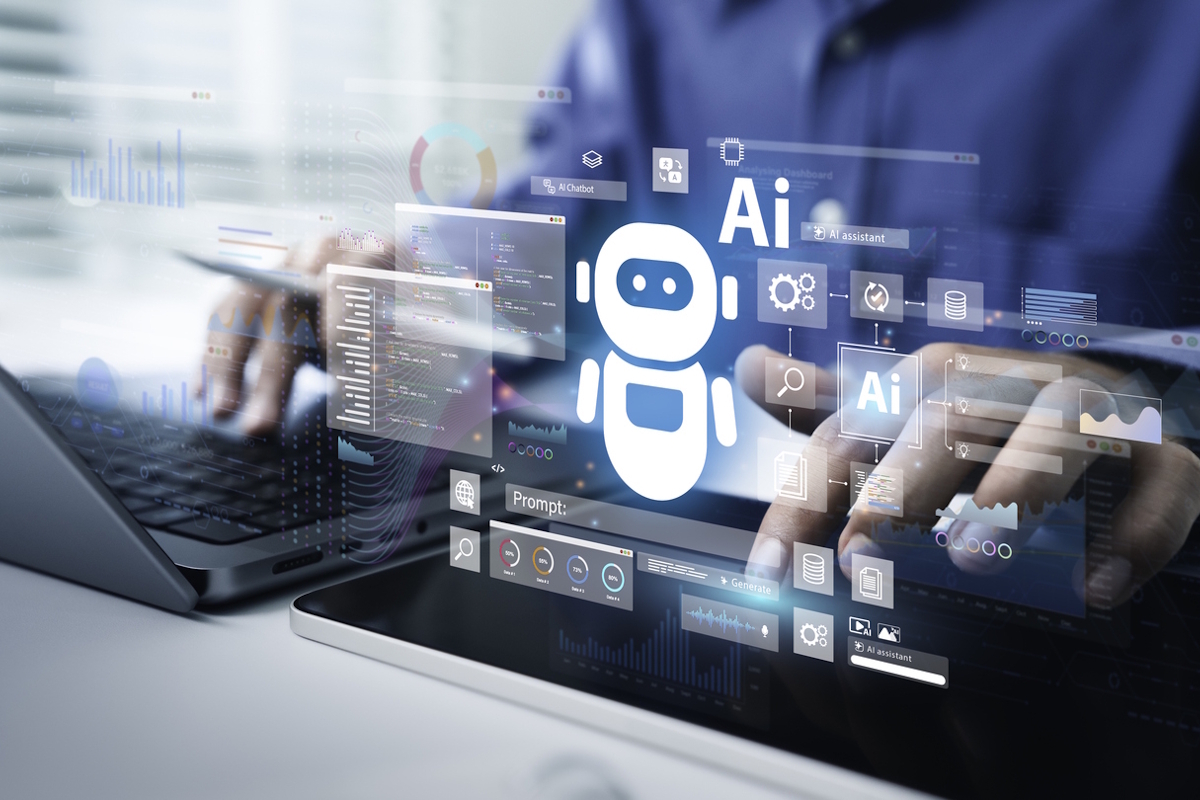Building an AI-powered workplace

Mark Eyden at Laserfiche describes how smart content management is reshaping business operations
Just three years ago, artificial intelligence was still seen by many as an emerging technology, reserved for specialists and early adopters. Fast forward to 2025, and AI has firmly established itself as a workplace norm. No longer a futuristic concept, AI is now an essential tool woven into the fabric of daily work life, empowering employees across industries to work smarter, faster, and more creatively.
As organisations continue to embrace and refine AI integration, the modern workplace is being redefined, showcasing the transformative power of AI as a standard, indispensable resource for today’s workforce.
In this piece, we’ll explore how AI has been positioned as an essential component in many day-to-day operations and a necessity in improving the employee experience; and we will examine where we’re heading.
A glimpse into the AI-driven future
In 2025, AI is no longer an experiment. Companies have moved beyond testing and are deploying AI at scale. Agentic AI chatbots can now recommend products and complete transactions autonomously, while AI-powered fraud prevention help detect and prevent scams. AI isn’t just emerging—it’s here.
According to McKinsey, five forces are defining AI in the workplace in 2025: improved intelligence and reasoning, agentic AI enabling autonomous robot workers, multimodality that integrates text, audio, and video, and increased transparency through better reasoning and clearer explanations of its processes.
Workers are using AI to be more creative. A report by Deloitte found that 70% of workers are open to offloading tasks to AI to free up time and boost creativity, yet 28% worry about technology threatening their jobs. AI is both a blessing and a curse—while it reduces mundane work, it also raises concerns about job security.
And better reasoning is giving businesses more confidence in AI models. Looking back on AI’s early days, many remember its tendency toward bias and its ability to confidently present falsehoods. To address this, large language models are increasingly including explanations of their reasoning or cite sources. A notable example is China’s DeepSeek model, which impressed with its whitepaper outlining the importance of reasoning in large language models.
Then there’s the rise of AI-powered tools in Enterprise Content Management Systems (ECM), making document management smarter and more intuitive. People are so accustomed to AI in their daily lives—whether it’s Google Maps or Alexa—that they expect similar automation at work.
These systems don’t just organise and secure business data; they also streamline tedious processes like onboarding and contract management. By automating routine paperwork, AI is freeing employees to focus on more creative, high-value tasks.
Like all technological change, there’s a lot happening, and this is just scratching the surface, but those who can harness AI stand to gain a lot. According to McKinsey, the long-term opportunity that AI presents in added productivity growth from corporate use cases is around $4.4 trillion.
Addressing increased cyber-risks
But it’s not all good news. While AI has boosted businesses, it has also made malicious cyber activity more prolific and dangerous. Threat actors are using AI to automate attacks, develop advanced phishing and social engineering tactics, and are leveraging deepfakes and generative AI tech to deceive employees and exploit vulnerabilities more efficiently. In response, businesses in 2025 are locking down their data and investing more heavily in information governance.
This is part of the reason businesses are assessing their records management practices and ECMs. Because cyber attackers are finding increasingly sophisticated ways to exploit data, businesses are locking down the attack surface by securing their data and documents and ensuring the proper access controls and audit trails are in place. ECMs help organisations centralise digital sensitive documents, providing version control and enhanced security.
Another factor driving businesses toward ECM is data integrity. AI is only as powerful as the data it’s trained on, yet 67% of organisations admit they don’t fully trust their own data for decision-making. Proper data indexing not only improves AI performance today but also lays the foundation for future scalability. These systems allow for automated document management, ensuring data remains structured and accessible.
AI’s role in tomorrow’s world
AI in 2025 is a lot like hybrid work: by balancing automation with human oversight, businesses and workers can reap the benefits of efficiency while reducing mundane tasks.
Certainly, there are some risks. While AI is freeing employees from routine tasks and enabling more strategic work, some roles are shifting toward refinement and review of AI output—raising concerns that critical thinking skills could erode in the process.
At the same time, some businesses that have made big bets on AI aren’t yet seeing the expected returns. This is because we’re only just exiting the pilot phase. Almost 90% of business leaders anticipate that AI will drive revenue growth in the next three years.
Businesses that automate their business processes using tools like ECMs — which can support the quick rollout of automated solutions with drag-and-drop tools or prebuilt templates — have more time to train their staff. According to a report by IBM, 62% of organisations are already using AI to personalise learning content for employees, leading to a more engaging and effective training experience; this keeps their critical thinking skills sharp and ensuring they’re ready for further digital transformation.
McKinsey’s report highlights the immense potential of AI, but businesses must be agile to truly capitalise on it. The technology is advancing so quickly that the best opportunities could emerge from various areas—talent, new business models, or competitive products. Organisations must also invest in workers who can drive this transition.
Millennials, now the largest generation in the workforce, have emerged as some of AI’s strongest advocates. As they increasingly step into leadership positions, they are naturally guiding the next wave of AI adoption.
Yet, the real differentiator for businesses isn’t generational. It’s a commitment to empowering employees with the right training and skills to harness AI’s potential. In 2025, organisations that invest in upskilling their teams are already seeing the benefits, proving that a well-prepared workforce is key to thriving in an AI-driven era.
Mark Eyden is Director of Partner Development, EMEA at Laserfiche
Main image courtesy of iStockPhoto.com and Khanchit Khirisutchalual

Business Reporter Team
Most Viewed
Winston House, 3rd Floor, Units 306-309, 2-4 Dollis Park, London, N3 1HF
23-29 Hendon Lane, London, N3 1RT
020 8349 4363
© 2025, Lyonsdown Limited. Business Reporter® is a registered trademark of Lyonsdown Ltd. VAT registration number: 830519543





